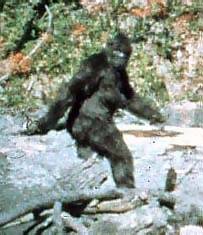READING COMPREHENSION: TEXT 3
Read this text carefully and answer the questions.
The Yeti: Myth or Reality?
The Yeti or Abominable Snowman is a monster who lives in the
Himalayan regions of Nepal, India and Tibet. People have believed in
the Yeti for thousands of years and it is part of the Himalayan history
and mythology.
The first person who saw the Yeti was a German photographer in
1925, but many Nepalese people affirm having seen the Yeti as well.
Mountaineers also say having seen large footprints in the snow. In
1970, British mountaineer Don Whillans announced to have seen a
strange creature when climbing Annapurna. According to Whillans, he
heard some strange screams. His Sherpa guide believed to be a Yeti's
call. That night, he saw a dark shape moving near his camp. The next
day, he observed some human-like footprints in the snow, and that
evening, viewed with binoculars a creature that was searching for
food not far from his camp. However, expeditions to find the Yeti
have failed, perhaps because of the difficult weather conditions in the
Himalayas, thus there is no scientific evidence about its existence.
The Nepalese describe the Yeti as a nocturnal creature, which kills
animals, but which is not necessarily dangerous to humans. It is
approximately 1’82m tall, has human characteristics, and is covered
with short brown hair and has white spots on his chest. He has a
broad face, a large mouth and long teeth. His arms are very long and
reach almost to his knees. It stands up when it attacks. When
Tibetans are asked what animal looks like the Yeti, they choose the
orangutan.
The idea of an ancient species surviving for millions of years hidden
from humans is difficult to believe but fascinating as shown by other
existing myths such as the Loch Ness monster or the Coelacanth fish.
However, if the Yeti does exist and wants to remain unknown to us,
the frozen landscape of the Himalayas is one of the safest places for
him to be.
Adapted from:
http://fun.familyeducation.com/hobbies-andinterests/mythology/35246.html#ixzz1NqUZZoOc and
http://www.wikipedia.com
1. Who was the first person who claimed to have seen the
Yeti?
.................................................................................................
2. The mountaineer Don Whillans is...
a) German.
b) British.
c) Nepalese.
3. Don Whillans...
a) took a photograph of the Yeti
b) saw the footprints of his Sherpa guide in the snow.
c) found footprints in the snow and saw a strange creature.
4. Most of the characteristics of the Yeti are described in the…
a) second paragraph.
b) third paragraph.
c) last paragraph.
5. How tall is the Yeti?
...................................................................................................
6. According to the text the Yeti is...
a) a human being capable of surviving in frozen landscapes.
b) a tiny, cute pet which lives in cold places.
c) a big creature not always dangerous to humans.
7. The Abominable Snowman looks like...
a) an orangutan.
b) the Loch Ness monster.
c) the Coleacanth fish.
8. True or false? The Yeti...
a) can scream
b) has his chest covered with long white hair
c) has no teeth
d) has small feet
e) is dangerous to animals
9. The frozen landscape is ideal for the Yeti because...
a) he can attack the mountaineer’s camps very easily.
b) the weather conditions make it easy for him to hide himself.
c) if he gets lost he can get home by following his footprints in
the snow.
10. The text...
a) gives evidence of the existence of the Yeti.
b) proves the non existence of the Yeti.
c) explains that the Yeti’s existence cannot be confirmed.







